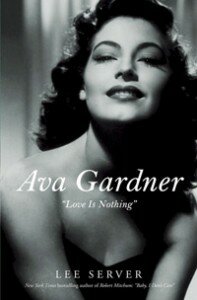Depending on your age, you may remember seeing Glenn Ford in movies and on television. I’m thinking roughly of the 1970’s, perhaps late 60’s. He usually had an avuncular quality. He was a nice, friendly older man. He often played fatherly types. For example, in 1978’s Superman: The Movie he played kindly Pa Kent.
So for us, seeing his work from the 1950s comes as a bit of a shock. The actor we see in movies like The Big Heat is anything but Pa Kent.
It’s hard to know where to begin with The Big Heat. It is about as dark as movies get, and that sort of makes sense since it’s directed by Fritz Lang, a man Roger Ebert refers to as, “… one of the cinema’s great architects of evil.”
How does Pa Kent wind up in a Fritz Lang movie? If you see the domestic scenes in the movie, and the contrast between them and the rest of the film, you’ll see why. Lang explores evil, both its extremes and its subtleties. Ford plays his part perfectly, enunciating both sides convincingly and leaving us wondering just what kind of man this really is.
I’m not sure the review below is quite how I think about the movie today. I want to watch it again and possibly revise it. I’m wondering now if Glenn Ford’s Det. Sgt. Dave Bannion might not be the original Dirty Harry.
The Big Heat
directed by Fritz Lang
Now this is what a noir film should be. Good guys, bad guys, and a lot of dubious ground between them. (Mind you, it’s not a noir film in the strictest sense.)
Perspective is everything, I suppose, and perhaps that is why (for me) noir works best in black and white. It’s how I came to know them when I was younger. This doesn’t mean more recent, colour noir movies don’t work (just look at Chinatown and L.A. Confidential), but black and white just seems more appropriate.
Maybe it’s the sense of shadow and gray that comes across. It reflects the heart of these stories, an uncertain, dangerous world where it’s hard to tell who is on your side, or even what side you’re on.
As in Gilda, the casting of Glenn Ford is perfect. He plays these parts well. He’s the hero, but not so heroic as to be unbelievable. In fact, the type of hero he plays here is the same type Clint Eastwood got so much mileage out of for so long. He’s the ambiguous good guy.
Then there’s Gloria Grahame who gives a wonderful performance as Debby, the gangster’s girl.
But where The Big Heat really excells is in casting Lee Marvin, an actor who gives Robert Mitchum a run for his money as one of the meanest s.o.b.’s to appear on screen.
Marvin’s explosive and sadistic temper come across as so natural you would be afraid to meet him anywhere but on the screen.
In many ways, The Big Heat is a template for certain types of films (though it certainly wasn’t the first to use this pattern). This is a revenge story. But watching it from this point, over 50 years after it was made, it’s easy to forget that some of the set-ups and patterns were not established in the way they are now so, while in some ways they appear to have a certain stale, over-used quality, the truth is they were fresh and even alarming in 1953.
For example, there is the set-up scene where the domestic life of the Ford character is shattered. The scene becomes the catalyst for the character’s later actions. This pattern has been used over and over again since (again, particularly by Eastwood).
Regardless whether it’s perceived as new or cliche, it works. From start to finish The Big Heat holds you and carries you through its dark unwinding. To be perfectly true to the noir genre, Ford’s character is not as corrupt as he should be (though his revenge could be considered a form of corruption, I suppose). But this is quibbling. It certainly has the noir feel and that is far more important. Noir is really about atmosphere; it’s about tone.
This one is highly recommended.



